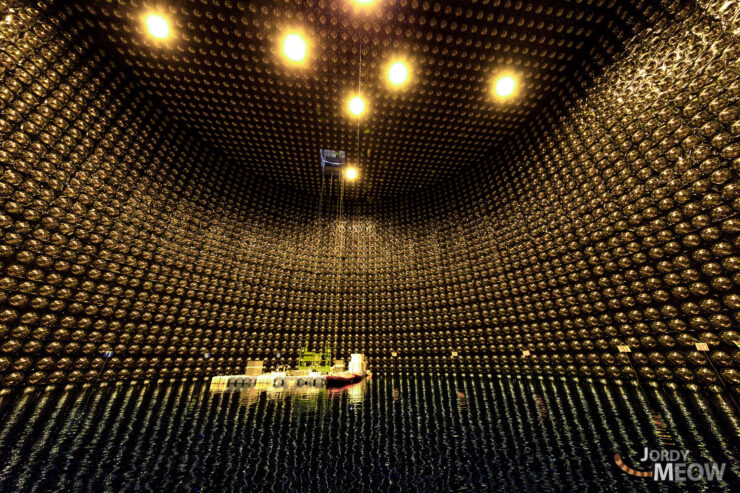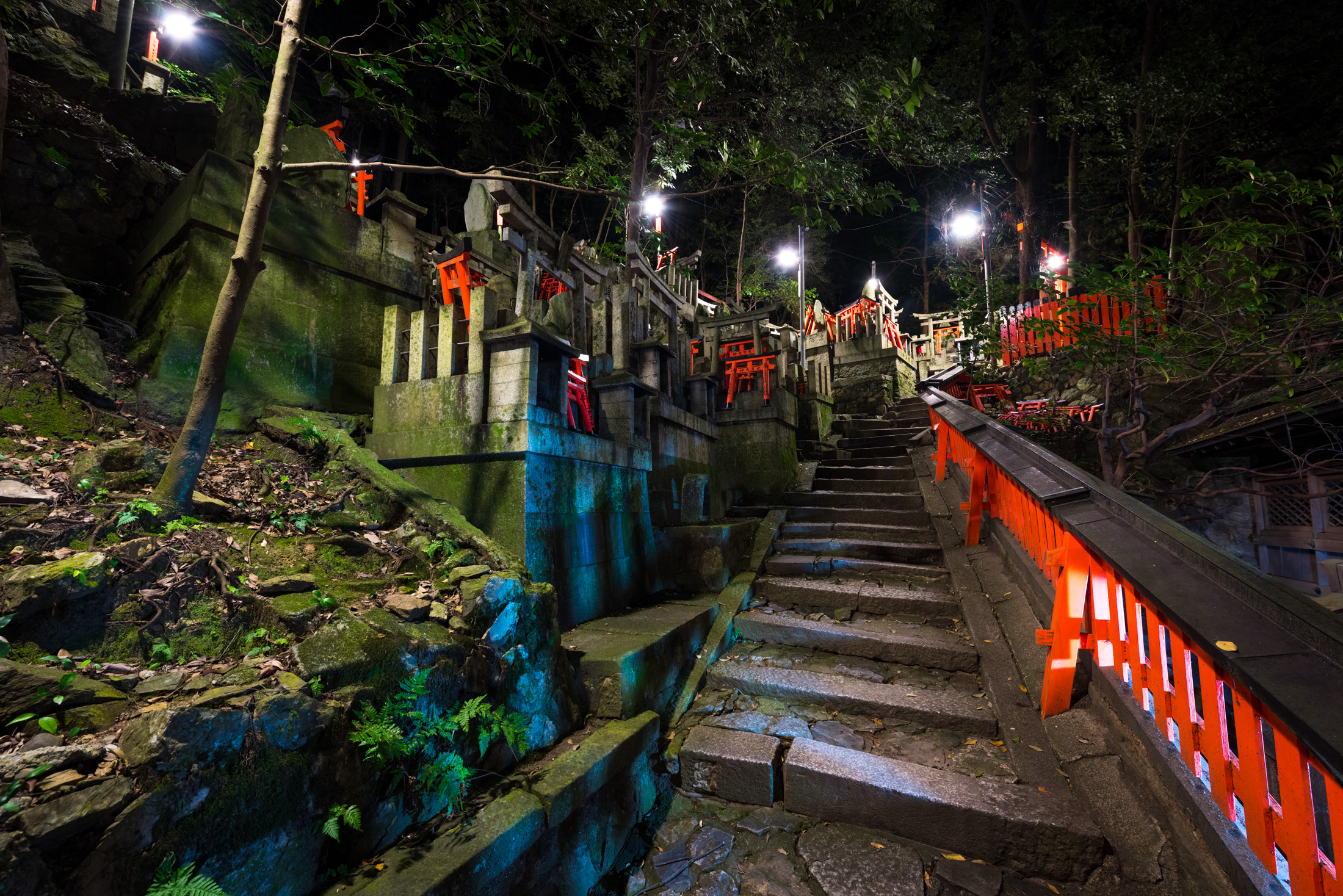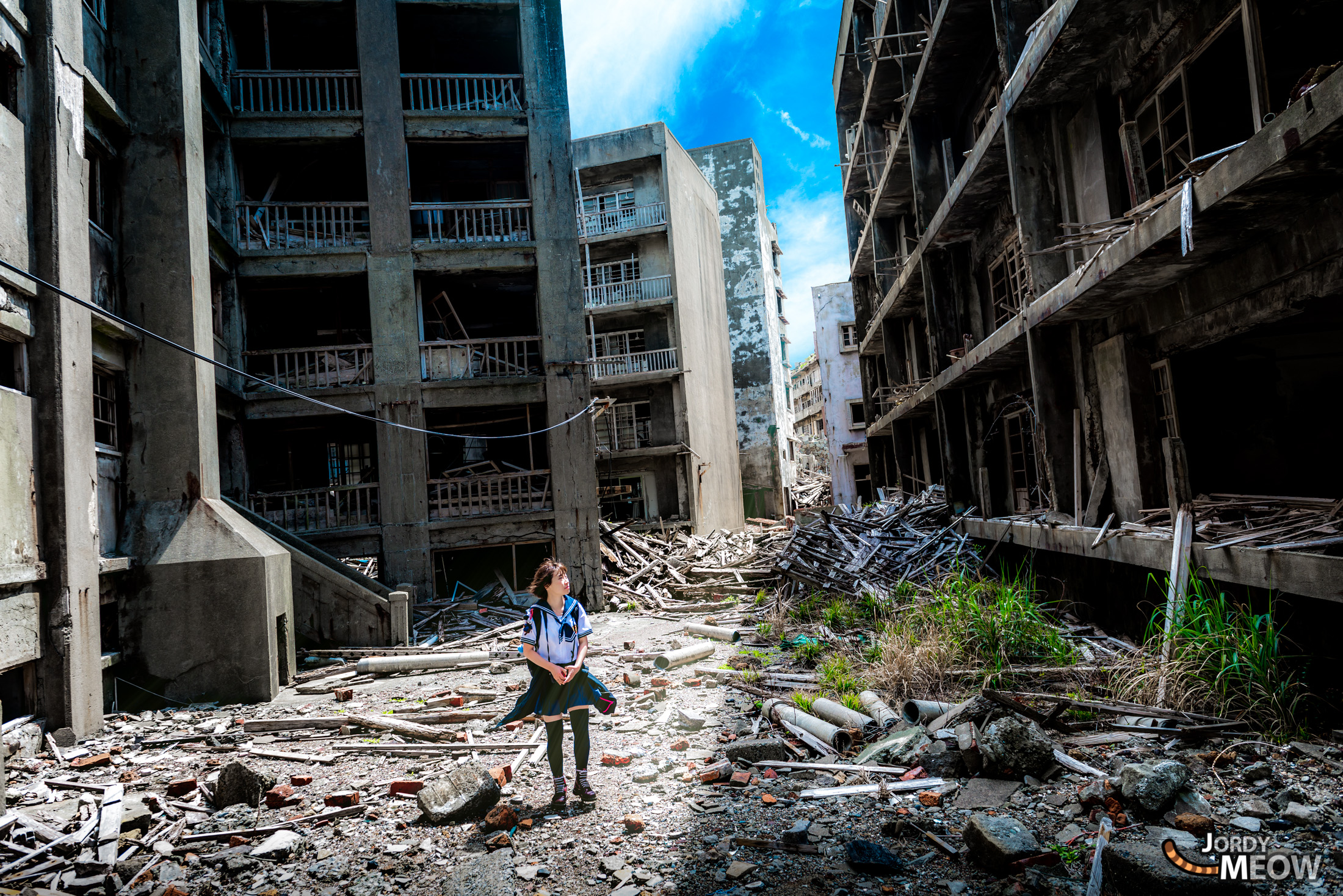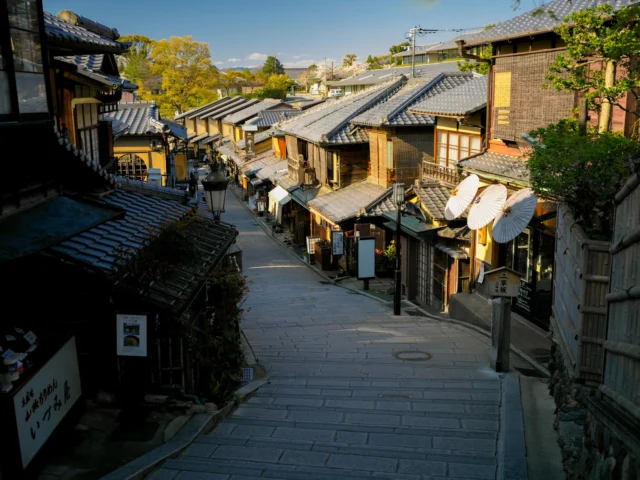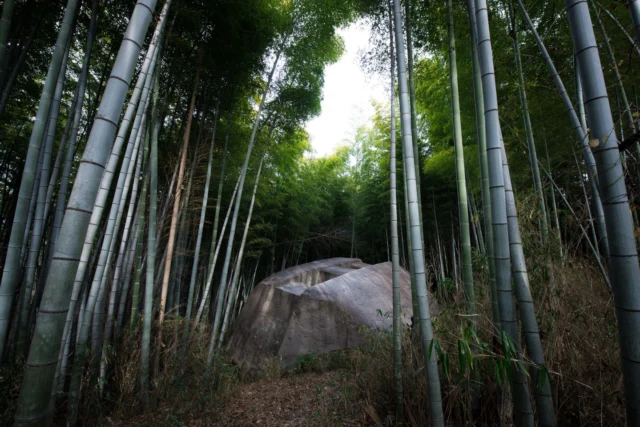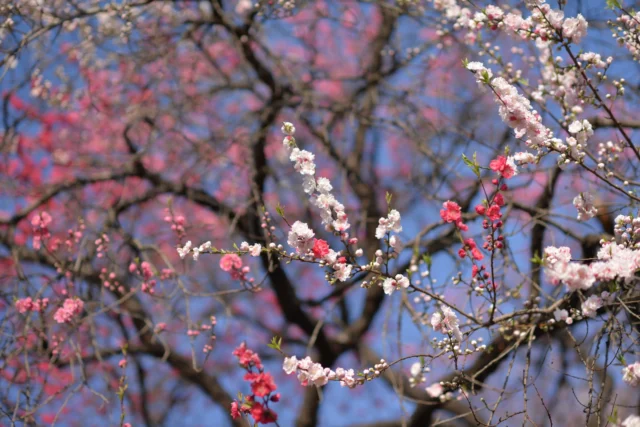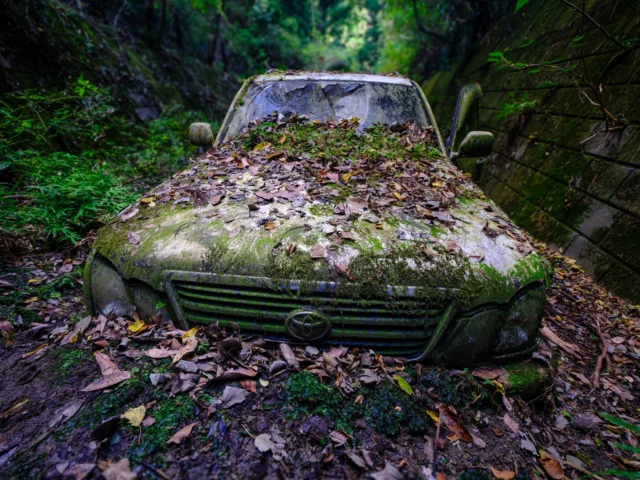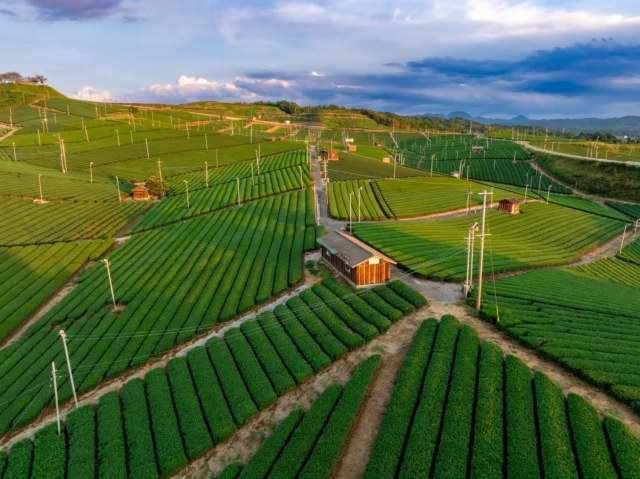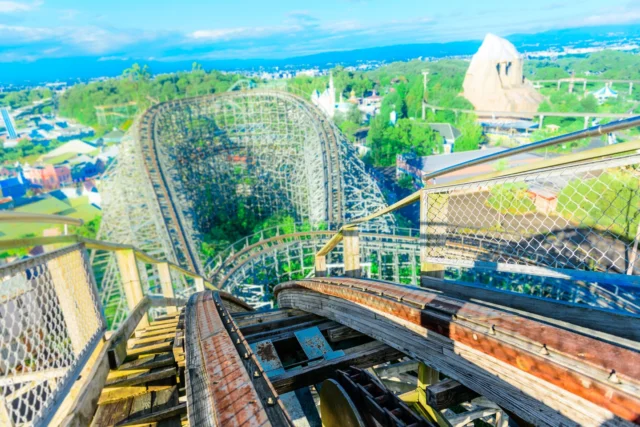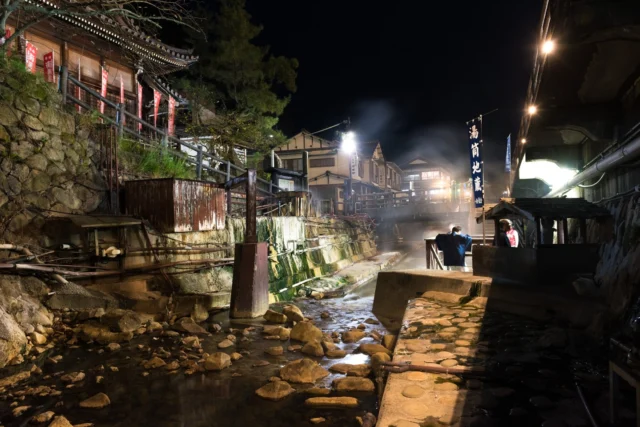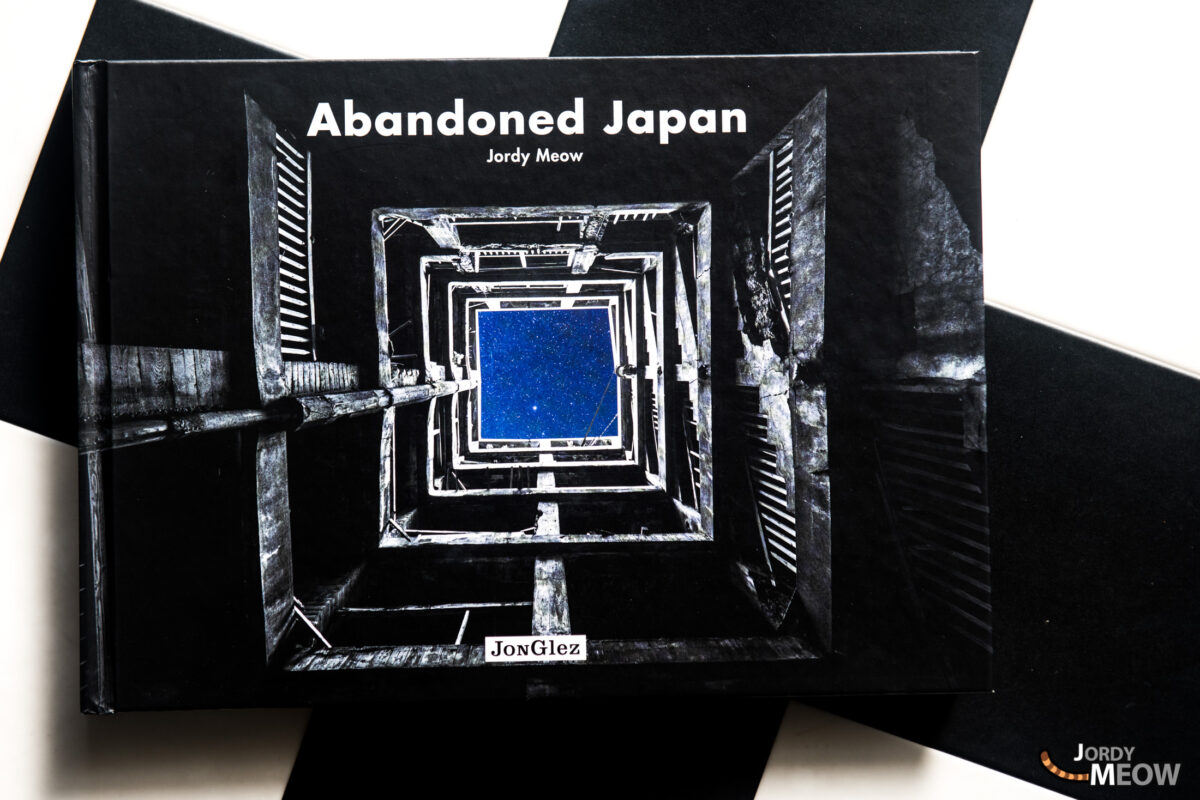In fact, you won’t believe your eyes. Total adventure. I’ll take you there? OK, let’s explore Super-Kamiokande!

The detector is cleaned once every ten years or so. As its 40-metre high stainless-steel tank is normally filled with 50,000 tonnes of purified water, a team of workers slowly drains the tank, lowering the water level landing by landing. They get around in little boats to clean and repair, even changing the photomultiplier tubes (PMTs) that line the walls. The revamp takes a few months. It’s 2018, and one is under way.
It’s now or never. I’m in the village where the mine entrance is. Apart from a welcome sign announcing Super-Kamiokande, this is a completely ordinary-looking stretch of rural Japan.

The tunnel entrance is near here, deep in the mountain. The site is totally unmarked, but the number of warning signs and safety instructions at the entrance reveal its underground hideout.
Parking the car on a narrow track, I pick out a safety helmet from a little shed and head down the tunnel. The air is fresh; there’s no sign of life.

I plunge down into the old mine tunnel. The giant Super-K chamber was constructed one kilometre underground, using the former network of tunnels at the Kamioka mine. I’ve visited the abandoned parts of the mine in the past, as documented here: Kamioka Mine.
Just as I’m beginning to wonder if disaster is looming, a light appears in the distance. I quicken my pace. This is the entrance to Super-K! Listening hard, I hear only the wind and the soft hum of electric generators. I push open the door.

Now I’m standing on a elevator pod. Looking down, I realize that the vast tank of the detector is just below. Is this a lucid dream? Press the down button, the pod rattles a few seconds and then descends rapidly. Try to hold back a rush of exhilarated tears …

The pod alights on a highly unstable floating platform. I edge forward, trying to come to terms with the physical laws of such an otherworldly place. Unless it’s me that’s completely disoriented. I’m pitching and rolling. Best pay attention. As the water is ultra-pure, anybody stupid enough to fall in will be exfoliated at best, dissolved at worst.
Looking around, I’m in an alternative universe with thousands of stars twinkling in an absolute calm. The air is invigorating, the water dances like silk in the wind.

An inflatable dinghy offers up a paddle as it bumps against the platform. It wants me in there. I sit down gingerly and push off from the platform. I’m propelled into the centre of the detector. It’s difficult to make any sort of gesture; I’m scared of falling, or dropping one of the seven cameras jiggling around my neck.
How does a neutrino detector work?
Right then! How are the subatomic particles known as neutrinos detected? Through the PMTs that line this giant tank, and others installed outside. There are around 13,000 of them altogether. But don’t they pick up other signals in error? No, because of Super-K’s location, the only particles that pass through are neutrinos (due to their extremely low mass and zero electric charge).

The PMTs look like large golden-coloured lightbulbs, but they are quite the opposite. Instead of converting energy into light, these devices convert very weak light signals into an electrical current, and this current constitutes the data collected by Super-K. But what’s the relation between the neutrino and this weak light?
Well, you already know that a plane travelling faster than the speed of sound creates a shock wave, a sonic boom? Same thing happens here. The neutrino moves faster than the speed of light in water, and as it passes it creates a shock wave: Cherenkov radiation. It’s this weak signal that will hit the PMTs.

Now you know pretty much how it works. On the other hand, what’s the point of these analyses? Eternal life? A clean and unlimited source of energy? An Internet of the universe that will allow us to troll distant neighbours? As such questions overwhelm me, a guardian angel appears at my side to answer them.
Interview with Christophe
This is Christophe, a French researcher who’s been living in Japan since 2014. He was my guide on this extraordinary visit (so no way can it be classed as urban exploration).

Jordy: Why the importance of understanding the neutrino? What could that bring to global understanding of physics or of the universe?
Christophe: For now, we study the neutrino mainly for scientific reasons. This particle isn’t well known yet and understanding its properties could lead to advances in physics. One of the questions of major interest is why the universe consists of matter rather than antimatter, whereas according to quantum physics matter and antimatter should be produced in equal quantities. Recent measurements indicate that neutrinos and their anti-particles don’t behave in exactly the same way, which suggests the reason for this discrepancy.

Neutrinos are also used as messengers to study astrophysical phenomena such as supernovae (explosions that occur when an ageing star collapses) or other intense phenomena. Neutrinos generated during these events are complementary to the information that telescopes can detect. Because, unlike light, neutrinos can pass through dust clouds. Also, as they aren’t positively charged, they aren’t deflected by magnetic fields.

Jordy: What kind of data and parameters are stored concerning neutrinos? What exactly are you analysing?
Christophe: We store the precise moment at which a PMT receives light, and the amount of light. From this information we try to reconstruct what happened, working back to the neutrino.
Jordy: Are there any realistic uses for the neutrino?
Christophe: At the practical level, the only application I know of is monitoring nuclear reactors in the context of the non-proliferation of nuclear weapons. A working reactor produces (anti-)neutrinos. With a neutrino detector, you can tell whether a reactor is working or not, particularly if it’s been shut down to extract plutonium.

Jordy: Does Super-K detect vast numbers of neutrinos? Where do they come from?
Christophe: We detect neutrinos …
- produced by the Sun
- atmospheric, produced by collisions of cosmic rays with molecules in the atmosphere
- artificial, produced using a particle accelerator (in the case of Super-K, it’s located in Ibaraki prefecture)
- produced by an exploding star, a supernova. In this case, a significant number of neutrinos will be detected over a short period of time. Work done with Kamiokande, Super-K’s smaller predecessor, shared the 2002 Nobel Prize for Physics for detecting neutrinos from Supernova 1987.
There are other contributing sources of neutrinos, but they are too weak to be clearly identified by Super-K. Such as neutrinos from nearby nuclear reactors, or geo-neutrinos produced by radioactive decay in the Earth’s crust.

Jordy: If neutrinos are essential, and if they suddenly disappeared on a whim of the universe, what do you think the consequences would be?
Christophe: Difficult to say. As there are considerable quantities of neutrinos in the universe, if they were to disappear the total amount of energy would decrease by 1% to 2%, and perhaps slightly change the speed at which the universe is expanding. It seems to me that the most visible effect would be indirect: neutrinos are produced by nuclear reactions, especially in the Sun and the stars. So no more reactions, no more stars in the universe.

Jordy: One last question: what would happen if our boat capsized?
Christophe: Basically I think we’d be soaked 😉

Christophe would like to add further technical details to my explanations:
Christophe: Not only neutrinos are detected, as it happens. As the facility is underground the amount of cosmic radiation is reduced, but some rays penetrate. And natural radioactivity. In the final analysis, these background noises and neutrinos have to be separated out. In addition, Cherenkov radiation isn’t produced directly by the neutrino, but by the particle fallout when a neutrino interacts with a water molecule. These particles generate light because in water they travel faster than the speed of light.
Thanks Christophe for all these electrifying details! I’ll now introduce one of his colleagues, Yumiko Takenaga.

Around and about Super-K
Yumiko deals mainly with Super-K communications, such as the official website, brochures and press releases. She’ll tell us more about life around and about the detector.
Jordy: Has Super-K become a local tourist attraction?
Yumiko: In March 2019, a museum opened in Kamioka, 20 minutes from here: it’s called the KamiokaLab. Visitors can discover astrophysical experiments like those of Super-K. The museum was built by the town of Hida, and we oversaw the work. A month and a half from opening, we’d already welcomed 30,000 visitors! We hope this will revive the local communities.

Jordy: What’s life like out here for you all?
Yumiko: Most of us actually live in Toyama prefecture, about an hour away. At weekends some go hiking, and we organize barbecues. And the numerous wild animals to be found around the observatory – monkeys, snakes, wild boars, bears – are often involved in an accident on the road to work.

Jordy: Would you recommend any nearby places to visit?
Yumiko: The KamiokaLab, of course. But also Gattan-go, where visitors can cycle along disused railroad tracks.
Thanks Yumiko for this invaluable info. As for me, I haven’t yet been to KamiokaLab or Gattan-go, so that’s for next time.
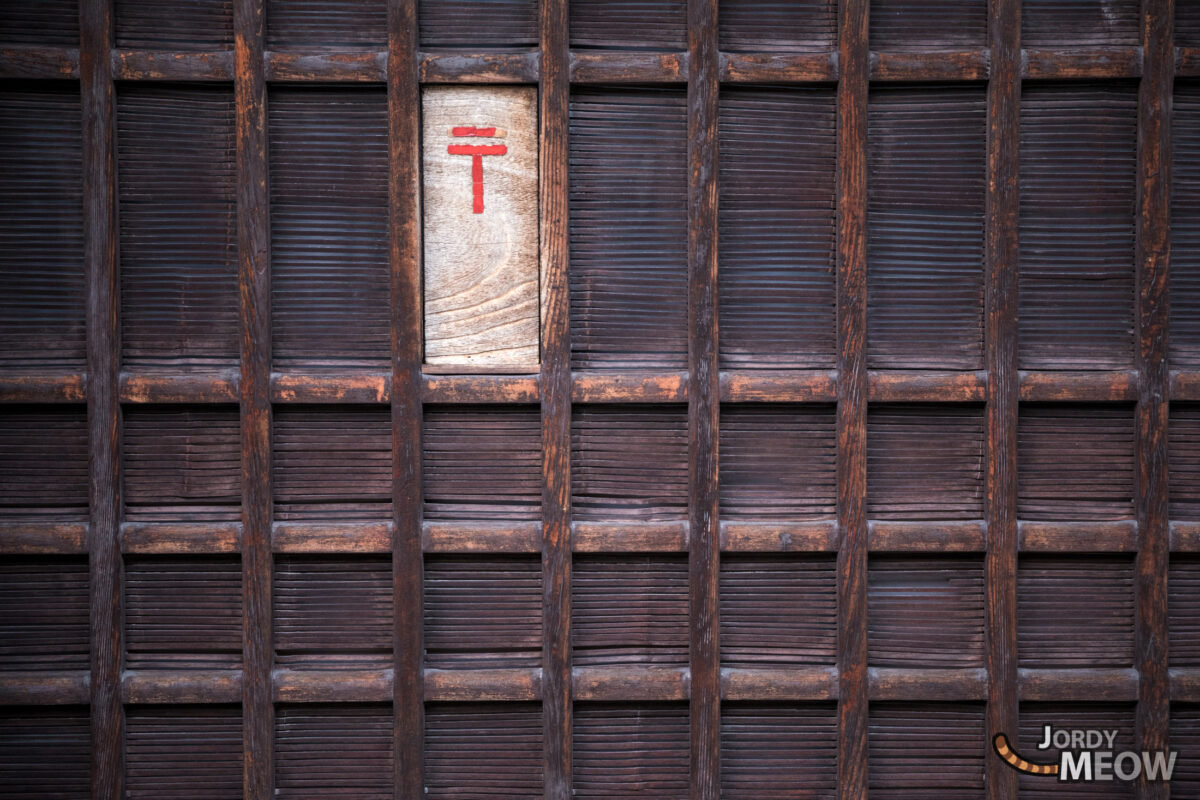
Thanks for reading right to the end! I hope the visit has impressed you as much as it did me, and that in turn you’ll impress your friends from the frontiers of knowledge … I’d also like to warmly thank Dr Suzuki for all his kindness and help.
PS: I’ve never had so much trouble taking pictures and working them up! I’ll try to improve this selection one day soon.
And for more awesome content about Japan, follow Jordy Meow on Instagram ! 🎵


